| Altri nomi | guillotine blades, guillotine cutters, guillotine knife, industrial blades for paper, paper converting knives, paper cutting blades, paper cutting knife materials, paper slitter blades |
|---|---|
| Luogo d'origine | Cina |
| Applicazione | Plastica, Carta, Cartone, Tessuto non tessuto, Pellicola, Lamina, Etichette, Nastro, Tessile, Imballaggio, Moquette, Borse, Gomma |
| Materiale | 65Mn,9CrSi,Cr12MoV,SKD-11,HSSl |
| Numero di modello | CV-RS |
| Servizio dell'OEM | Disponibile |
| Termini di pagamento | L/C, T/T, Western Union |
| Pacchetto | Scatola di cartone, In casse di legno |
| Tempi di consegna | 7-20 giorni |
Condividere a:
Industrial paper cutting knives, also known as paper cutting blades or guillotine blades in some contexts, are robust and precision-engineered cutting tools designed for use in industrial paper cutting machines. These knives are built to efficiently and accurately cut large stacks or continuous webs of paper and paperboard in high-volume production environments. The term “industrial paper cutting knives” emphasizes their heavy-duty construction and suitability for demanding, continuous operation in manufacturing and converting processes within the paper, printing, and packaging industries.
Coltelli industriali per il taglio della carta are essential tools in various stages of paper processing and converting. Their key applications include:
The selection of material for coltelli industriali per il taglio della carta is crucial for achieving optimal cutting performance, longevity, and resistance to wear, especially when dealing with various paper types, including abrasive and coated papers. Common materials include:
Coatings such as titanium nitride (TiN) or chromium can be applied to enhance surface hardness, reduce friction, and improve corrosion resistance, further extending the life of coltelli industriali per il taglio della carta.
Coltelli industriali per il taglio della carta come in various shapes and configurations tailored to specific cutting processes and machinery. Common shapes include:
The geometry of the industrial paper cutting knife, including the blade angle, bevel, and edge sharpness, is critical for achieving clean, accurate cuts and maximizing blade life. The correct selection of blade shape and material depends on the type of paper being cut, the cutting process, and the production volume requirements.
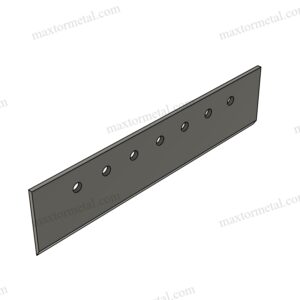
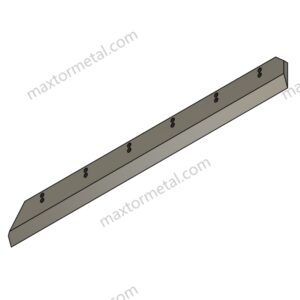
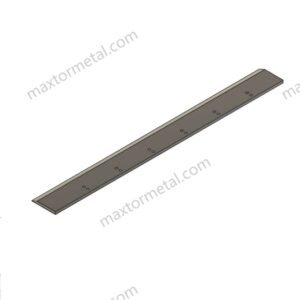

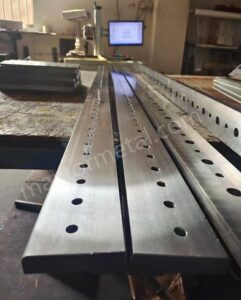
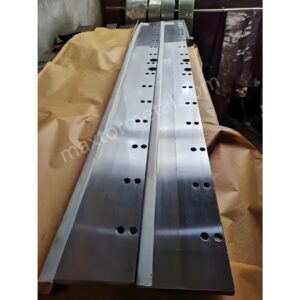
È facile usufruire della comodità dell'importazione: dal trasporto allo sdoganamento, ci occupiamo dell'intero processo, tu devi solo pagare l'IVA e attendere che la merce arrivi in azienda.
Abbiamo visto le sue lame utilizzate in innumerevoli applicazioni ed è pronto a gestire qualsiasi progetto ci venga proposto, offrendo precisione, durata e prezzi competitivi senza pari.
Che tu fornisca disegni, schizzi o campioni, siamo in grado di disegnare e produrre per te. Abbiamo anche la capacità di assistere nella modifica di progetti e specifiche esistenti per migliorare quasi ogni applicazione di utensili industriali. Contatta il nostro team di vendita dedicato per discutere le tue esigenze specifiche.
Per controllare la qualità vengono eseguiti una serie di test e ispezioni, tra cui l'ispezione del primo articolo, l'ispezione del materiale in entrata e dei materiali certificati, l'ispezione della qualità in corso di lavorazione e l'ispezione della qualità finale.
Che tu sia un importatore, un distributore, un grossista o un utente finale, ti invitiamo a unirti a noi con un MOQ minimo, nessuna seccatura per le richieste e maggiore libertà di acquisto.
Diventa il tuo monitor esclusivo, trasmissione regolare di ogni nodo importante nella linea di produzione, non importa quanto lontano, per comprendere il progresso del prodotto il più lontano possibile!
La guida definitiva alla manutenzione delle lame di taglio a ghigliottina: prolunga la durata e ottimizza le prestazioni
Nanchino Metal Industrial CO., Limited
Parco industriale Mingjue, Lishui, Nanchino, Jiangsu, Cina
Rimani aggiornato con le nostre ultime novità.